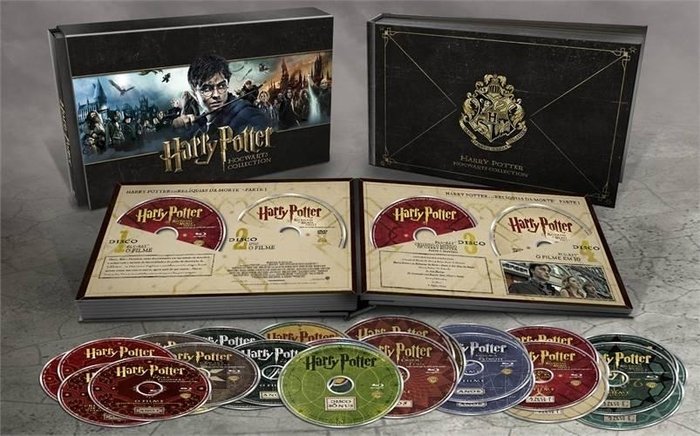

The likes of Doctor Strange 2 ($411 million), Jurassic World Dominion ($375 million), Minions 2 ($350 million) and Thor: Love and Thunder ($325 million) all pulled as-expected business. The summer season is down 28% from 2019, even as the total number of theatrical releases is down 55%. That is partially because it earned around $500 million more than even the rosiest projections.
HARRY POTTER BLU RAY BOX SET MOVIE
Top Gun: Maverick accounted for 23% of the domestic summer movie line-up. Top Gun: Maverick’s exceptional success supplied a giant lifeline to theaters and cover for studios willfully underdelivering regular theatrical products in an uncommonly sparse summer. And at least some of that audience then showed up for regular movies like Elvis, Where the Crawdads Sing and Bullet Train. It was a Passion of the Christ or American Sniper-level event which legged out to near- Force Awakens-level success. While the film is a nostalgia-tinged, IP cash-in legacy sequel, its success was partially driven by older and irregular moviegoers who hadn’t been to theaters in years. That subtext resonated in the summer of 2022, when it seemed like theaters might only be safe for Marvel/DC movies and high-end horror flicks.


The film is a metaphor for how Hollywood so egregiously failed to create a new generation of Tom Cruise-level movie stars that Cruise had to get off the bench and save the industry. Top Gun: Maverick really did save movie theaters this summer. 'Top Gun: Maverick,' 'Jurassic World Dominion' and 'Doctor Strange in the Multiverse of Madness' Paramount, Universal and Disney It’s a star-driven, real-world, adult-skewing Hollywood blockbuster that scored with adult-skewing and irregular moviegoers. Paramount will argue that the artistic (mostly rave reviews and an A+ from Cinemascore) and commercial (including James Cameron-style legs) success was aspirational. Its biggest triumph was contract negotiation which saw three generations of Spider-Man heroes and villains interacting. Its box office success didn’t help anything else in the marketplace. However, the notion of Spider-Man: No Way Home getting in never felt plausible. I’m guessing Wonder Woman probably just barely missed the cut in 2018. You can make a case for aspirational representation helping push Black Panther over the goal line, although rave reviews, white-hot buzz and $700 million domestic didn’t hurt. The smaller, star-driven, adult-skewing studio programmers felt comparatively aspirational. Likewise, the success of Guardians of the Galaxy (rave reviews, long legs and $773 million global) meant little more than Hollywood continuing to case the MCU. By the time Harry Potter 7.2 opened in the summer of 2011, there had been enough of a turn toward IP-centric action-fantasy franchises that such a relative commercial ($1.342 billion) and artistic triumph was seen as par for the course. When Peter Jackson’s The Lord of the Rings opened 20 years ago, they were seen as unprecedented artistic and commercial triumphs for unprecedented fantasy-adventure cinema. Top Gun: Maverick has a better shot at a Best Picture nomination than Spider-Man: No Way Home, Star Wars: The Force Awakens or even The Dark Knight partially because the film qualifies as aspirational. I’d rather he win for that than for some “old guy rekindles his spark via a platonic relationship with a 22-year-old muse” prestige picture. It also keeps the film in the conversation amid the Oscar season releases, meaning that Paramount correctly thinks that its once-in-a-generation blockbuster can score a Best Picture nod and (less likely but plausible) a Best Actor nomination for Tom Cruise. Offering the physical media release in early November means the film’s physical media debut coincides with A) holiday shopping for stocking stuffers (it could be the biggest selling DVD in a decade or so) and B) the awards season screeners being mailed out to participating awards voters. I’m guessing November 1 is also the Paramount+ debut for the Tom Cruise-led actioner.


 0 kommentar(er)
0 kommentar(er)
